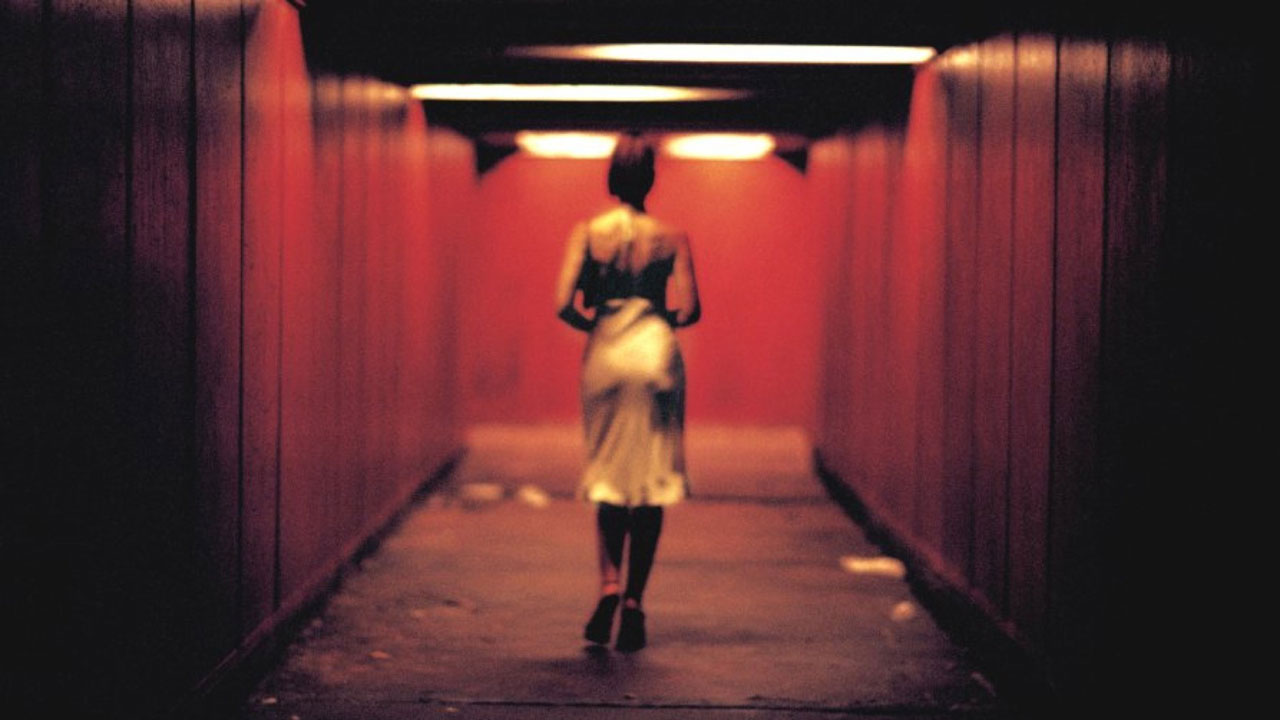
There are plenty of disturbing themes a movie can have, but without the correspondent acoustic part, the film couldn’t unfold its full range of fright.
While a lot of movies, especially uninspired and cliche-dripping horror films, rely on sleazy shock moments, the real brilliance and power of musical scariness lays in something more subtle. The following list presents some of the most terrifying soundtracks audiences got to hear in cinema.
10. The Exorcist (Mike Oldfield & Diverse)
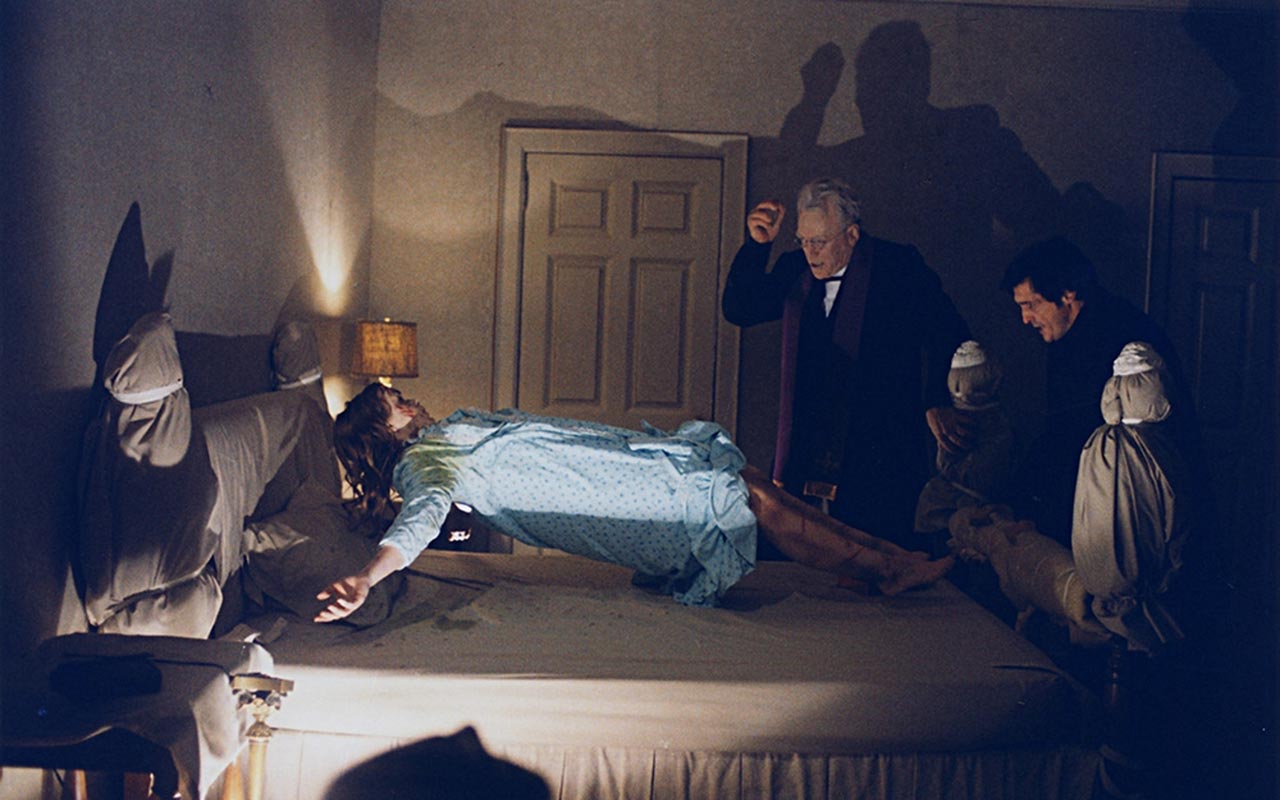
By the time of its release, “The Exorcist” had the reputation of being one of the most terrifying things that ever happened in cinema. The movie tells the story of a girl who’s under a demon’s spell. While mundane medicine can’t assist, the anxious mother looks for help in churchy spheres and two exorcism-executive priests.
Reviewed as a “raw and painful experience” by renowned critic Roger Ebert, the movie has horror-fueling scenes and especially one of the most haunting themes of all time. The main theme, taken from “Tubular Bells” by Mike Oldfield (the creator himself wasn’t satisfied with the way his music is used in the movie), sprays a highly sacral vibe, perfectly fitting to the supernatural events and the churchy environment the movie is about. It definitely has a spot on the podium of horror movie themes.
Despite its theme and some modern classical compositions by Polish composer Krzysztof Penderecki, Austrian musician Anton Webern and American musician Jack Nitzsche, the movie offers an excellent sound design, interweaving with the film’s score. Harsh high-tone strings with subtle distortion give the audience a feeling of uncomfortableness, resulting in an acoustic stand-out fear invocation.
9. Halloween (John Carpenter)
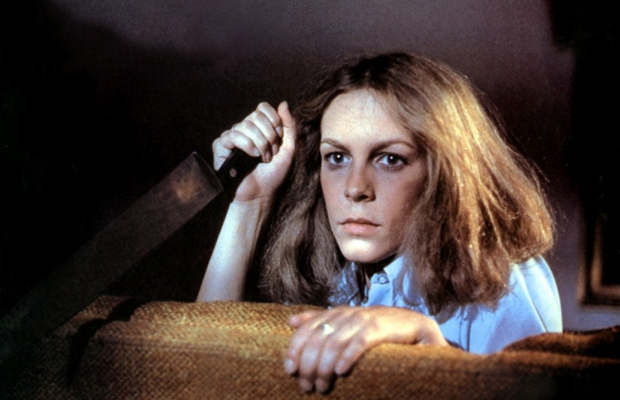
“Halloween”, released in 1978, works as a template for hundreds of slasher movies and ranks at the top of the most influential horror movies of all time. The story is simple. After murdering his sister, the six-year-old Michael Myers spends 15 years in psychiatry. At 21, Myers escapes one night before Halloween and starts to tyrannize a group of teenagers in his hometown.
Mostly known for his work as a director, John Carpenter is usually responsible for his scores as well. He developed a unique style with his synthesizer-driven compositions, spraying a highly nostalgic 80’s vibe and preaching a spooky horror aesthetic.
Composed in only three days, the score is one of the movie’s standout features with a theme as haunting as possible. The 5/4-composition contains of one simple piano pattern, some very decent percussions and a spheric synth. Every cinephile will recognize the melody immediately, thanks to its high level of memorability. The simple tone sequence entered the annals of cinema history and works as the perfect soundtrack for the evil lurking in the dark.
8. Mulholland Drive (Angelo Badalamenti)
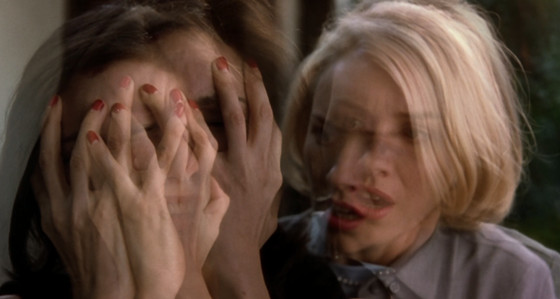
The collaboration between one of cinema’s most acclaimed and experimental directors David Lynch and composer Angelo Badalamenti offered the world five feature films and one of the most innovative television series of all time. What has its roots in 1986’s “Blue Velvet” reached its collaborative climax with Lynch’s surrealistic masterpiece “Mulholland Drive” in 2001 (Lynch received a well-deserved Oscar nomination for Best Director and the correspondent award in Cannes).
After getting into a car accident, Rita loses the sense of her own identity and gets in contact with a naive actress, who came to Los Angeles in order to become a Hollywood star. The search for the protagonist’s identity becomes a journey into the realm of subconscious and the scheming abysses of Hollywood, while the movie fuses different plotlines into one non-transparent narrative. The interpretation of the movie’s meaning could fill libraries without arriving at a distinct conclusion.
Badalamenti’s score is the perfect musical treatment for that and the film’s eminent mysterious aesthetic. The theme is an enthralling synthesizer composition, elegantly changing between heartwarming melodies and terrifying impulses with the composer’s trademark harmonics. His approach on movie scoring is a very atmospheric one; the music slides in keeping with the visuals and evolves an extensive maelstrom the viewer can’t elude.
Some of his compositions are a deep droning soundscape, while others are touching works full of emotionality; the scene in the obscure Silencio club is especially a masterpiece of surrealism and mixes the aforesaid features together. It’s a prime example of the acoustic layer enhancing the cinematic experience. Every detail of the audiovisual illustration is well-composed and nothing is left by chance.
Regarding the ingenious brilliance of the collaboration between Lynch and Badalamenti, it’s very unfortunate that the world didn’t see a new work in the past 16 years.
7. A Serbian Film (Sky Wikluh)
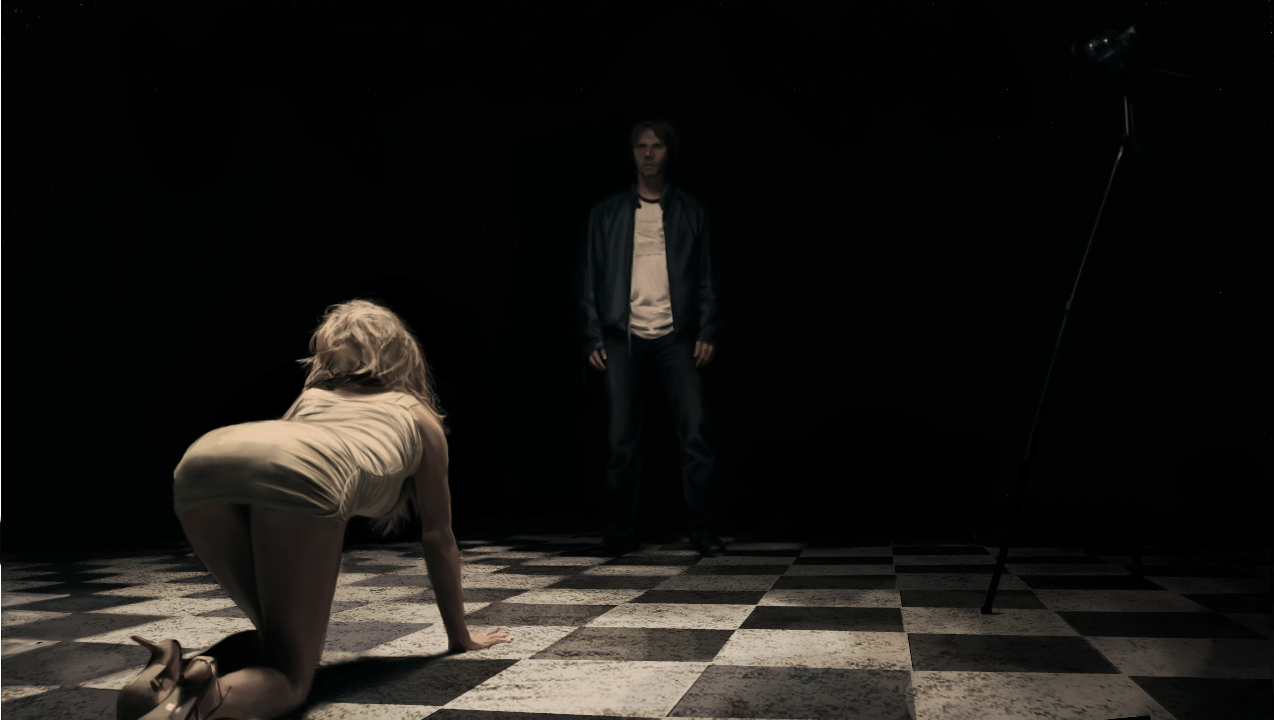
In tradition of movies like “Salò o le 120 giornate di Sodoma”, “A Serbian Film” is one of the most controversial movies of all time with its explicit illustration of violence and sexual abuse, including necrophilia and pedophilia. Regarding the extremities the movie works with, Serbian composer Sky Wikluh had a difficult task transferring these features into a suitable score.
His soundtrack interweaves between calm and highly expressive moments. Subtle compositions with occasional piano tones work as musical metaphor for the protagonist’s triste life with his abnormal relation to sexuality, and his son following his path while exploring his father’s former porn movies.
Aside from that, the composer’s work reveals strong influences of industrial music, noise, and even techno. Some tracks are monolithic breakbeat monsters with heavy saw synths and disturbing noises working as the perfect acoustic treatment for the enormous violent force shown on screen.
The movie’s leitmotif appears in different variations – as a simple piano sequence or strength-screaming synthesizer patterns with crushed drumbeats – and excellently captures the film’s terrifying aesthetic. It’s very difficult to elude the power of attraction emanating from the mélange of visuals and sound, even if some scenes definitely are way beyond the mark of “hard-to-stand”, unreasonable for average moviegoers and at times even hard-bitten cinephiles.
6. Eraserhead (David Lynch)
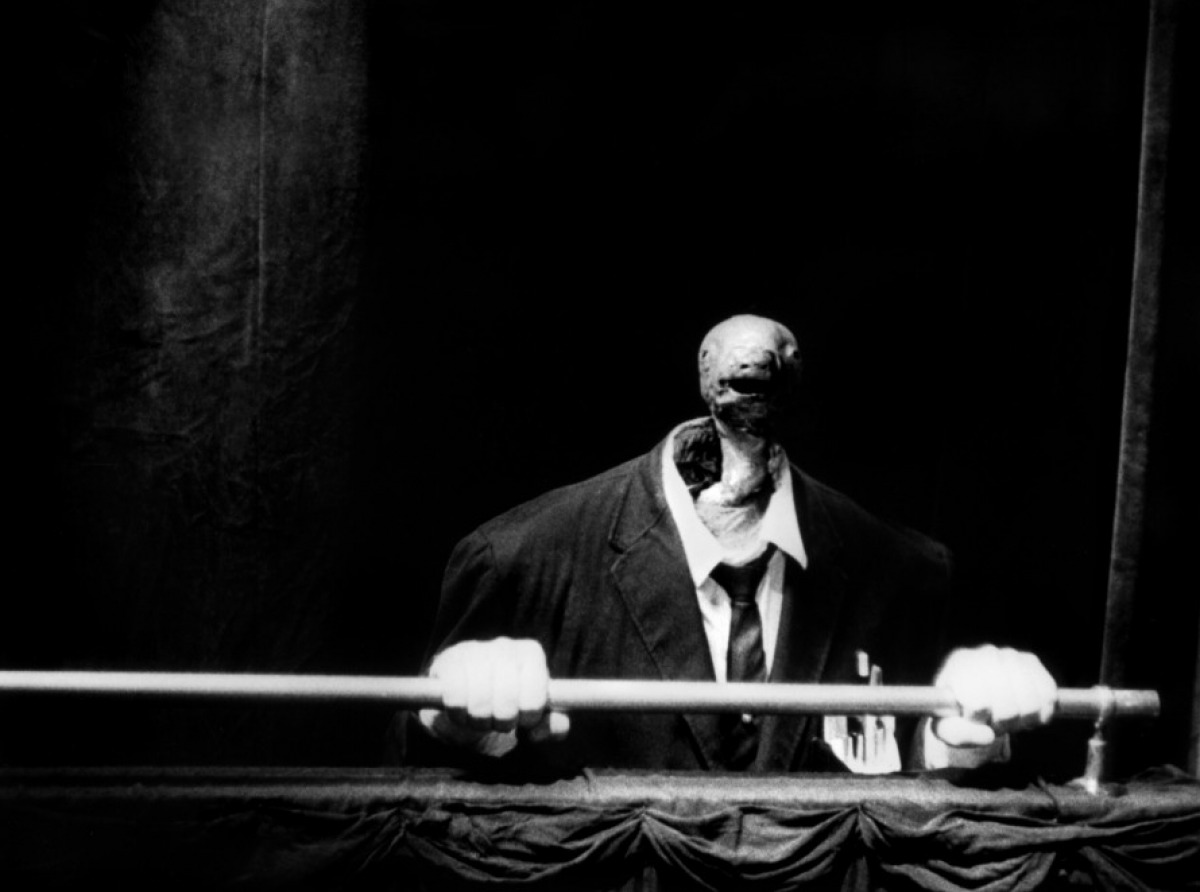
The second Lynch film on this list is his grainy black-and-white debut “Eraserhead”. Regarding the lack of a classically structured movie score (the movie contains just two ‘traditional’ songs), critics will argue that “Eraserhead” has no disturbing soundtrack to offer. But what primarily appears as the movie’s sound design turns out to be highly avant-garde soundscapes, which could definitely be described as a musical layer.
Produced by the director himself, the soundscapes are atmospheric excursions into industrial music, ambient realms, and electronic pioneer work. The music reveals interesting reminiscences to the works of early 20th century futurists such as Luigi Russolo or later electronic trailblazers such as Karlheinz Stockhausen and representatives of musique concrète.
Meandering drones take turns with high-frequency noise. Sometimes sounding like blowing wind inside the wide mouth of an industrial funnel, Lynch’s music perfectly fits into the triste surroundings of the film’s bizarre protagonist with its concrete buildings and surrealistic aesthetic.
The score gets its completion with the haunting song “In Heaven” performed by the mysterious “Lady in the Radiator” and originally written by Peter Ivers with lyrics from Lynch himself. It’s a terrifying ballade, cryptically thematizing the benefits of death.
Even with some very innovative scores on this list, “Eraserhead” wins the race in terms of experimental character. The movie develops an immersive swirl filled with fear and fascination in which the audience can’t escape.